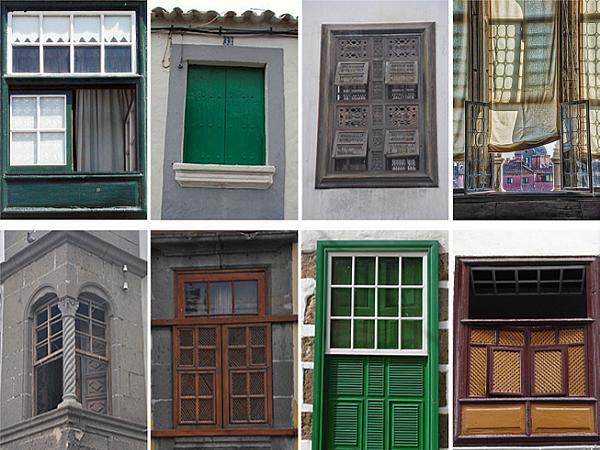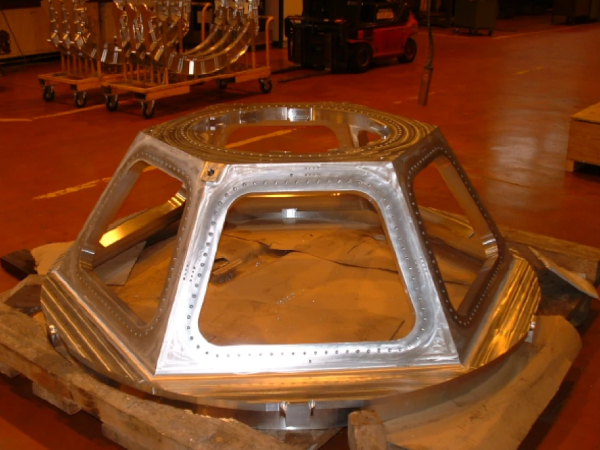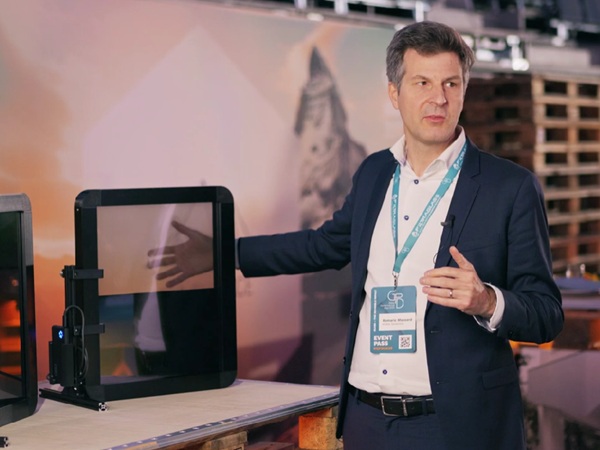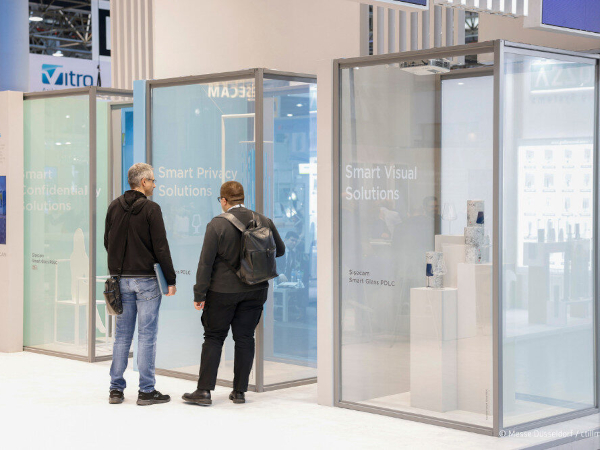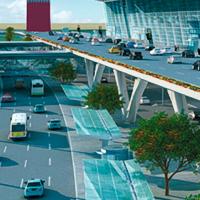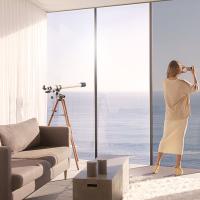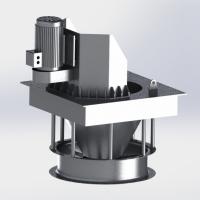First presented at GPD 2019
Last century’s breakthroughs in terms of glass and frame allowed the glass to progressively absorb functions traditionally present in other devices ultimately dissolving the window into transparent walls. Nowadays, smart windows intersect previous technologies with electrically activated materials with dynamic properties augmenting their capacity.
In this paper, we speculate on an idea of the window of the future according to state of the art in terms of glass and operable frames. We argue that a possible outcome of the combination of different technologies — magnetic and dynamic levitation, transparent photovoltaic glass, vacuum insulated glass, switchable glass, piezoelectric touch-sensitive surfaces or ultra-thin glass — might ultimately change the architectural approach to windows.
1. More glass, fewer windows: what is a window?
Imagining the future of the window is not an easy task. It is not even clear whether windows, as single recognizable operable devices, will still exist. Emerging in western architecture as apertures punctured in enclosing walls [1], to introduce light into buildings, admit air and provide framed views to the outside, they are spatial mediators of the relation between interior and exterior like glass doors, which additionally allow movement.
Therefore they work as filters, being historically accompanied by a series of devices that regulate light, ventilation, privacy, and atmospherical conditions. Some provide shading — shutters, louvers, jealousies, blinds, screens and curtains —, others security — bars, grills, storm sashes, handles and bolts —, while others — seats, sills, bow-windows, meshes — express different architectural approaches, varying according to climate conditions, cultural roots and social issues [2]. [Figure 1]

Over time, designers envisioned new architectural possibilities for glass doors and windows, which evolved in parallel and often intertwined with various glass and frame technologies and frame. The window as a hole progressively faded away as last century’s improvements allowed the size of glass panes to grow, undifferentiating windows and glass doors, and culminating in the glass curtain wall, which simultaneously expanded the window encompassing the entire façade and dissolved it into fully glazed skins.
Furthermore, during the 20th century, closed façades become prominent, especially in corporate buildings, with windows that provide uninterrupted views to the exterior but prevent any physical contact with it, as mechanized ventilation systems absorbed the function of air supply. Industrialization, on the other hand, sacrificed the genealogy of window and its local specificities, institutionalizing global practices and standard requirements of thermal efficiency, fire resistance, airtightness and waterproofness.
Tempered glass also played an essential role in this evolution, allowing glazing to perform a structural function, which was until then prohibited. With all these changes, windows lost their autonomy as isolated elements and their role as visual framing agents. Glass as a screen wrapping (parts of) the façade replaced the anthropomorphic metaphor of windows as the “eyes” of the building, challenging the traditional concept of window [3]. [Figure 2]
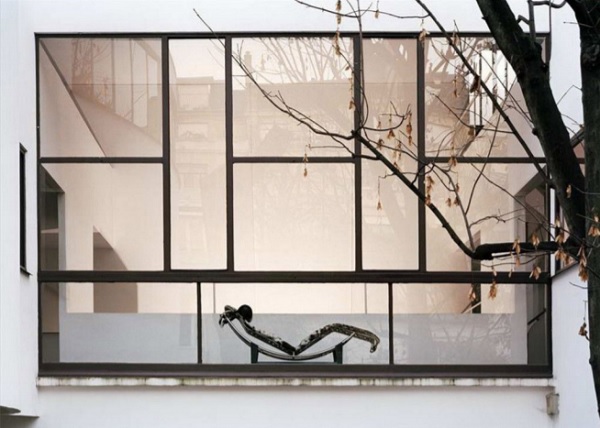
Indeed, while historically, one tends to identify windows as the transparent parts of a given façade, the advent of large glass walls challenged the identification of the window and its profile. One could still identify its essence on the operable parts of transparent enclosures, which offer not only views of the outside but practical possibilities of physical contact with the exterior. [Figure 3]
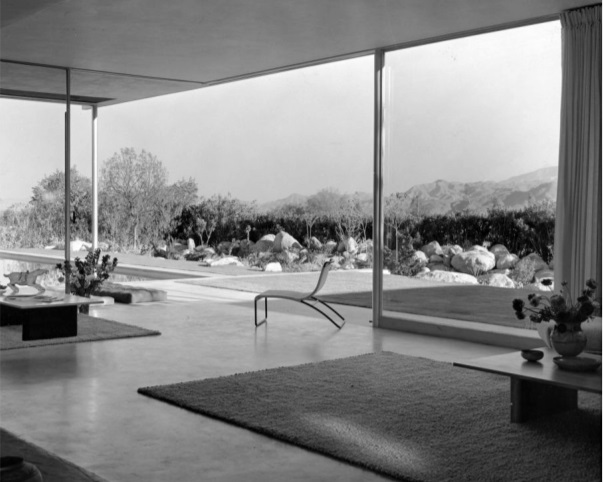
2. Smart materials, smart glass: intelligent windows?
More recent breakthroughs in terms of glass technology rendered glass truly dynamic, efficiently congregating the different features and possibilities traditionally present in a multi-layered system of filtering devices into a single architectural element with (almost) no thickness. It is a radical mutation in the approach to the scale of walls and openings. Indeed, glass alone can now efficiently control solar gains and radiation with coatings, incorporate blinds or meshes in its cavity, provide unmatched insulation with triple glazing or vacuum glass, dynamically change its opacity and temperature, and ultimately generate energy and convey digitized information converting windows in electronic displays.
This shift is achievable mainly through the potential of programmable materials and artificial intelligence methods which promise to enhance the use of our day-to-day objects and devices, bridging and interconnecting them to form “master” devices with uses and applications never thought before. Despite being an old material, glass assumes a predominant role in this revolution, with increasing architectural applications — in windows and façades and also in many different parts of the building structure and devices — as many novel materials and technologies are developed in combination with it.
Therefore, glass functions both as a structural material, with customizable mechanical properties thanks to the improvements in the material itself, and as a base for energy management and interactive systems through coating and printing technologies that implement features that functionalize it actively and passively.
Besides lamination for intrusion prevention, high-selectivity coatings for radiation control, layers for heated glass or digital display, the incorporation of interactive functionalities through sensors, displays and actuation capabilities, render glass and windows a vital element of the concept of the “internet of things”. The materials that allow these features are so-called “smart materials”, which are generally grouped into property-changing, energy-exchanging and matter-exchanging [4]. Many are ready for implementation, while others are still under development or commercial applicability.
Triggered by light, temperature, pressure, electric and magnetic fields or the chemical environment, they provide functions that are applied to glass leading to “smart glasses” and “smart windows”, intersecting previous technologies with electrically activated materials offering interactivity or switchable properties. Relevant examples of dynamic solutions for glass and windows include:
1. control of optical transmittance, introducing variations in light transmittance in the visible spectrum to manage solar radiation and privacy as well as decorative issues thanks to materials with colour and optically changing properties under light, thermal or electrical stimuli passively (photochromic or thermochromic) or actively (electrochromic).
2. control of thermal transmittance, through the management of wavelengths up to the infrared region of the electromagnetic spectrum; the adequate control of radiation transmission and thermal absorption will enable implementation of energy saving strategies for heating and cooling buildings.
3. memory and shape (or dimension) changing properties under thermal, electrical or magnetic stimuli that can be applied to windows in the development of controllable joints and sealing components with expansive materials;
4. adhesion changing materials, allowing active or passive control of hydrophobicity of the surface, enabling the implementation of self-cleaning glass or aluminium profiles or antibacterial agents.
5. photoluminescent smart materials, fluorescent, phosphorescent and electroluminescent materials, enabling specific various lighting possibilities;
6. piezoelectric and magnetoelectric materials, allowing the implementation of ceramic or polymer sensors and actuators in glass;
7. photoluminescent smart materials, including self-luminous glass for windows and skylights;
8. photoelectric and thermoelectric materials, enabling the application of energy generation, storage and management, notably with solar cells for photovoltaic glass or thermoelectric generators.
9. heat storage materials, contributing to energy efficiency management.
10. implementation of “transparent electronics”, with sensors, actuators and display capabilities, enabling the highest levels of interactivity and energy management.
Thus, glass “alone” can actively determine the visual, luminous, thermal and acoustic control of environments. Nevertheless, the vast majority of available solutions with dynamic properties is still far from being truly interesting in an architectural point of view. Available switchable glass or photovoltaic glasses, for example, are yet intermediate solutions, imposing to renounce some features: total opacity for electrochromic glass [Figure 4],
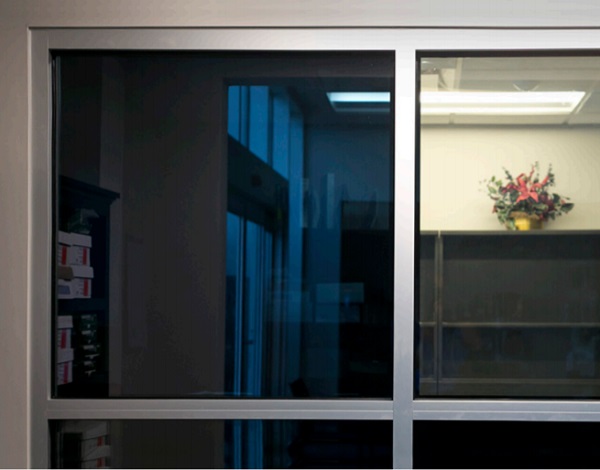
full transparency for (semi-transparent) photovoltaic glazing. [Figure 5]
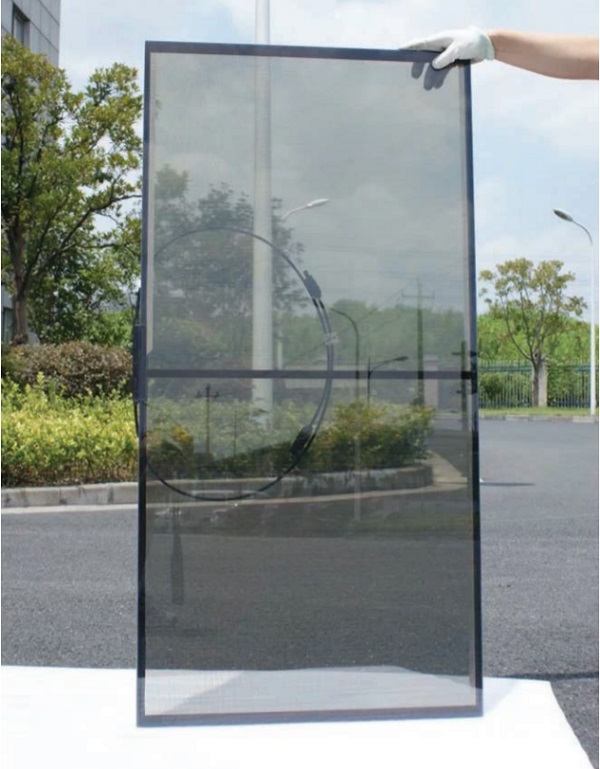
Indubitably, these and the other referred “smart” solutions are promising developments and will have a specific place in the future.
However, we believe that the current state of the art is not satisfactory since in most cases their visual noise renders the payoff not evident, unless from an exclusively economic point of view when the client is not the user. It is also worth to note that many of these active properties are electronically stimulated or require the implementation of readout and communication system. Therefore the frame becomes particularly relevant — ensuring a complete integration between electronic components and mechanical parts.
The role of the frame in art is well known, and George Teyssot interestingly notices, quoting George Simmel’s 1902 essay The Picture Frame: An Aesthetic Study, that “the frame, by the very materiality of its border, […] helps the work of art to exclude anything exterior while offering a concentration on its interior. The frame guarantees the possibility of an autonomous existence for an artwork.” Similarly, with windows and mainly electrically activated “smart windows”, the frame not only constitutes the definition of the limit but also ensures the real conditions for its dynamic performance.
Another idea that is worth bringing to the discussion is the difference between the concepts of “smart” and “intelligent”. While “smartness” is used to refer to state or property changing materials and devices, in a principle of stimulus and reaction, “intelligence” should consist, according to Webster’s definition, in the “power of meeting a novel situation successfully by adjusting one’s behaviour to the total situation”.
In today’s standards, this tends to be perceived as the integration of various systems into a fully automated architecture, with electronically enhanced domotic products and IT-based solutions, with systems capable of receiving and processing large amounts of data as an almost human-like ability to respond to different situations.
However, we should also see this capacity to self-adjust to time on a broader view, truly adequate to their time, not only able to respond to a momentary time condition. Intelligent buildings should not only have “intelligent” technological components — which likely will become obsolescent in a short time — but also be designed not to degrade the natural environment, cause sickness to the user [5] and, ideally, to respond to cultural shifts, resource issues, and ever-changing human needs.
In this more holistic perspective, smart windows [6] do present remarkable opportunities to respond to users’ needs and to reduce a building’s energy consumption by dynamically responding to control solar heat gains and environmental conditions and, eventually, produce energy. This ability to help reduce our dependency on foreign resources and inefficiencies in energy utilization is undoubtedly one of the most promising vectors of development.
However, available commercial semi-transparent photovoltaic glass is good enough for canopy and skylight applications, guardrails or integrated cladding, but not yet suitable for windows as transparent photovoltaic power-producing surfaces offer only 4-5% efficiency. To achieve 9% efficiency, glass has to lower its transparency to around 30-39% [7], the threshold of “transparent” glass.
It is therefore soon to turn windows into vertical power generators. But Michigan State University New near-infrared (NIR) transparent luminescent solar concentrators (TSLC), tested with high transparency (86% visible transmittance) and minimal tinting (94% color rendering index), obtain >20% yields [8], an amount of energy that, in many countries, would be more than sufficient to render the motorization of the window completely autonomous.
3. The virtual window: from metaphor to reality
A recurrent view for the “window of the future” is the emerging ability of glazing to convey digitized information, sometimes as a window’s virtual analogue. However, OLED capacitive screens features seem more suited to interior elements — TV or computers, interactive tables, glass partitions, displays — or mobile devices rather than the buildings’ exterior envelope.
The applications they promise — electronics enabled, touch sensitive, ultrathin, flexible and with advanced functionalities like 3D-projection or augmented reality [9] — can decisively be more useful in automotive design or handheld display devices than façades. Curiously, in 1435, Leon Battista Alberti’s famous treatise De pictura regarded painting as “an open window [finestra aperta] through which the historia is seen” [10], a metaphor commonly referred as the origin of the comparison of the window and picture that has shaped Modern Western thinking about images and the way of seeing the world [11]. Windows are certainly a compelling metaphor for paintings as much as screens, but the real ability of windowpanes to display digitized information seems the step to push Alberti’s metaphor beyond.
Many past predictions of the future explored this idea, besides speculating on cities of glass, invisible glass-made characters [12], electronic eyeglasses and goggles, or nightviewing glass implants [13]. A curious example is Slow Glass [14], a glass-like substance with such a large refractive index that light takes significant time, even several years, to pass through it. It thereby functions as a screen to the past, or more accurately as a limited time viewer.
In the 1966 novel that features it [15], people would use panes of slow glass placed in picturesque sceneries as “scenedows”, scenic windows to allow urban blocks to look out at landscapes stored in the glass. Prices would vary according to its “thickness”, the number of years of scenic view it contains. Despite how interesting these ideas and metaphors might be, their useful application to buildings remains very limited. In 1958, Walt Disney’s cartoon Magic Highway U.S.A. [16], about the future of highways and automobiles, featured windshields with radars. [Figure 6]
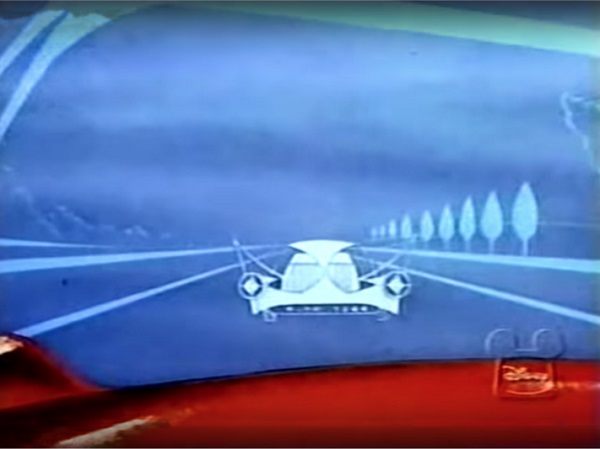
Sixty years later, cars increasingly use rearmounted cameras to replace rear mirrors, and the first night-vision systems provide an enhanced view through infrared cameras to spot people and objects, offering an even more objective reality than the one the driver can see in the road ahead through his eyes. [Figure 7]
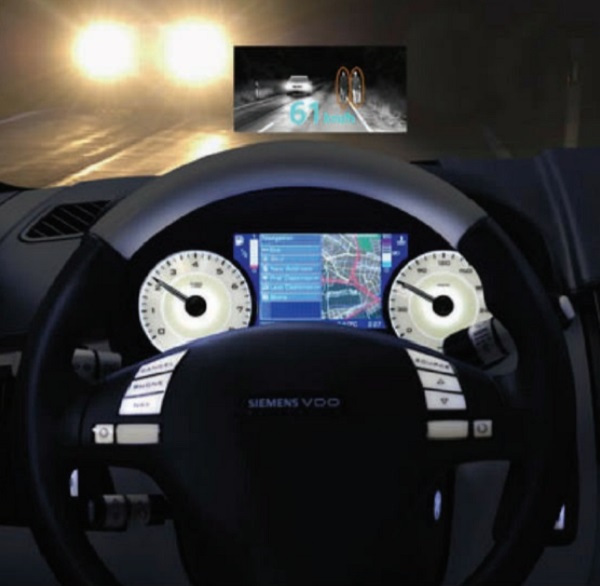
While in 1936, Cameron Menzies’ film Things to Come featured an imaginary 2054 windowless colony with high-resolution floating windowlike flat screens [Figure 8],
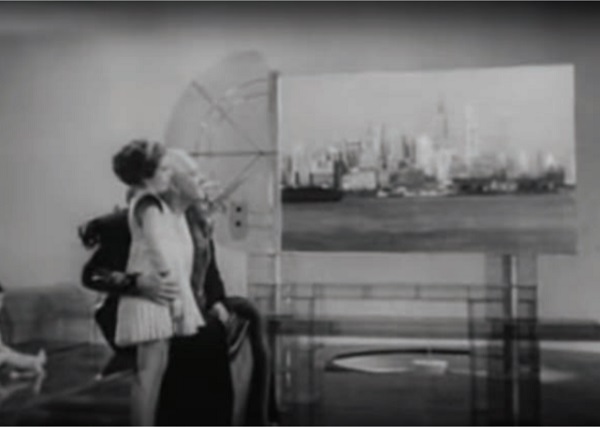
nowadays digital surfaces mimic reality with such quality that displays are being used to replace openings, as in the windowless aeroplane concept [17]. [Figure 9]
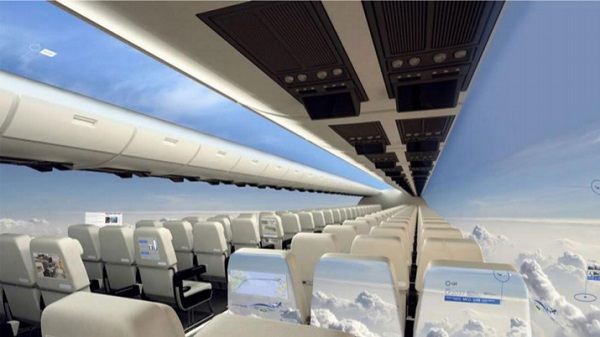
However, no matter how intelligent these solutions might be for flying faster, consuming less fuel, and providing more solid and aerodynamic structures [18], no other humanbased reason can reasonably justify that choice [19]. The same applies to buildings where, apart from window shops, one can see little advantage in replacing real windows with their virtual analogue. Nevertheless, integrated solutions, like transparent OLED displays with touchscreen abilities, might certainly constitute valuable devices for a window, not as a computer screen replacement but as enablers offering direct intuitive control over all the windows features.
4. To open or not to open: the things a window can do
A final, yet fundamental, aspect about “the window of the future” remains the question whether it should open or not. Throughout the 20th century, the complete elimination of operable components was pursued in many buildings, especially in large glazed corporate buildings. The most economical solution proved to be fixed curtain walls, inoperable façades offering no individual choice and control, with the function of air supply completely assumed and regulated by decentralized mechanical ventilation system — cooling the building in summer due to solar gains and heating the building in winter to minimize the effect of thermal losses. This environmentally irresponsible and absurd equation created inefficient buildings absorbing huge amounts of heat which require high levels of cooling to remove, representing a significant part of greenhouse gas emissions and is now being tackled by cities like New York and London that envision a ban on inefficient glass skyscrapers [20].
However, besides this economically oriented, dumb down option, other technical and architectural circumstances conducted windows not to open. Therefore, functions that historically were combined in a single element — bringing natural light, providing visual contact, ventilating and spatially connecting with the outside — have been separated [21].
In those cases, despite the visual connection windows can offer, all other senses remain disconnected from the outside as the glass blocks air, sound and space. Among the reasons behind it, highefficiency and high-performance also pushed for fixed enclosures, even in intelligent façade solutions. Indeed, many restrictive codes impose buildings to operate as perfectly sealed boxes, being completely airtight — with very efficient glasses, insulated frames and airtight constructions — to comply with rigid insulating requirements and face exterior conditions while natural ventilation is often discarded as an unreliable solution, putting buildings at risk of both under- and over-ventilation under different conditions [22].
But despite the widespread belief that airtight construction means closed façades, Passivhaus — the world’s leading standard in energy efficient design — does not require windows not to open, only that the building fabric has good insulation and is entirely airtight to prevent energy waste and discomfort when the building is in use [23].
Therefore, walls, floors, roofs, window and doorframes and junctions must be free from draughts and cold spots (as well as overheating), but windows and doors can be used when necessary or desirable, while a ventilation system operates providing a constant supply of fresh, clean air into the building and taking stale air out. This ventilation system could even be avoided in some cases, using exclusively natural ventilation — especially in mild climates, during the summer months —, but for comfort in cold weathers and energy efficiency reasons, mechanical ventilation with heat recovery is almost always required to meet the Passivhaus standard [24].
Nevertheless, with or without ventilation systems, windows can — and should — open, not leaving behind the feature of physically connecting inside and outside. Alternative air intakes — hatches in mullions, operable cracks in frames, motorized flaps or intelligent trickle vent with pollen filter, noise damper, air flow, and humidity control — have been improved and might ensure some natural ventilation, eventually allowing the breeze and noise, without altering the appearance of buildings from the outside.
But the physical/spatial connection is still abandoned in those cases. Ventilation and the operability of windows can indeed create problems with acoustics, and some European codes will not allow windows to open given excessive noise levels. But unless the building stands in particular places like an airport, these are temporary conditions.
The combination of a highly performant glass — possibly vacuum-insulated or hybrid — with sensors and motorization to allow windows to automatically and autonomously open and close, would allow buildings to naturally ventilate effectively and reliably, combining cross ventilation and keeping an interior temperature balance, while reducing the needs for heat and mechanical ventilation under certain weather conditions.
Sensors to automatically measure interior temperature, oxygen and humidity levels, as well as exterior conditions — temperature, wind, rain, noise, smell and pollution — and fully airtight systems — like magnetic or dynamic levitation [25], possibly combined with memory shape smart materials — are vital to this process. The savings in air conditioning systems, both in terms of cost and architectural impact — serviced false ceilings, for instance —, could channel investments to intelligent façade solutions.
5. Conclusion: windows for the future?
Advances in glass technology are finally rendering possible a fully glazed architecture. Paul Scheerbart’s vision of a Glass Architecture (1914) a century ago could become a reality as glass becomes the primary material for architecture, challenging its current use as a mostly functional, invisible element.
Being a primary structural material — through its compressive nature — and a performative element — capable of controlling privacy, visibility and light allowed in a transparent environment — glass might play the role of the stone in Middle Age architecture.
Though a property changing “stone”, and this is where different possibilities of development may emerge, just like concrete 150 years ago. This brings natural overlapping between the notion of openings and walls, something that derives from the Modern Movement. Under a technological perspective, this path could lead to a merge wall and window solutions in the future. [Figure 10]
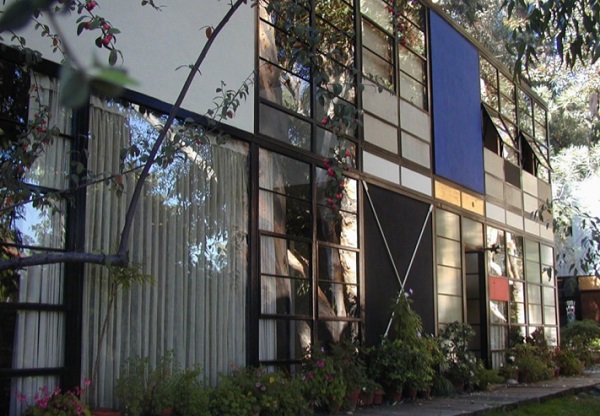
Envisioning a solution for a window for the future compels us to focus on critical aspects for architecture today, particularly environmental balance, comfort, flexibility and easiness of use. We believe a self-sufficient, dynamic, highly controllable, operable window might be the answer. Not a conventional “smart window” but a congregation of different technologies into an intelligent operable device. Glass is naturally the most crucial part of the process; among the promising glass technologies in the light of current perspectives, we underline the following:
— electrochromic glass, possibly allowing control of visibility from each side of the pane and reflection.
— photovoltaic transparent glass, allowing the glass to absorb part of the solar radiation to generate enough energy so to be independent of other energy sources, therefore rendering this automatic window an energetically autonomous carbon neutral solution.
— vacuum insulated glass for a thinner, lighter glass, as well as efficient thermal performance.
— piezoelectric, using touch-sensitive materials with electrical induction, to render the window easily activated and regulated through touch from the inside.
Additionally, other technologies can be decisive for the operability of the panes:
— magnetic or dynamic levitation for sliding solutions. Providing unmatched window operability, offering zero friction three-axis movements of the windowpane, ensuring absolute water and air tightness, something unachievable with the standard bearing solution.
— ultrathin flexible glass for tilt and turn and casement solutions. Flexible glass could be used in an entirely glazed window, waiving the need for hinges. Although still a speculative idea, a flexible and highly cut-resistant structural glass could allow casements to get larger, as their size would no longer be limited by their screwed or glued hardware’s material resistance.
Combining these technologies with sensors to monitor the environment and operate accordingly, the architecture of the window could have a considerable step beyond. Somehow paradoxically, the result could almost seem a return to the past, simplifying buildings and reducing our dependence on air conditioning, which is currently responsible for the consumption of scarce urban energy and the production of considerable air pollution.
The fact of rendering windows motorized yet energetically autonomous and holding them accountable for the ventilation of a building is a return to their historical role, offering a more natural use with a more significant degree of control and comfort, yet no longer dependent solely on the user’s action to open and close. Architecturally this certainly will constitute an essential change with buildings possibly organized differently. But it is also a lead on how innovation and technological evolution may simplify architecture and bring more sustainable and efficient management of resources.
References
[1] Different is the nature of doors and windows in Oriental architecture, particularly with Japan’s fusuma and shoji sliding panels.
[2] See Yoshiharu Tsukamoto and Atelier Bow Wow’s research Behaviorology focusing specifically on the ethnological aspects regarding windows.
[3] Also the concepts of “curtain wall” — which emerged in the 1940s as a non-structural façade — and “lightweight façade” suffer a terminological crisis as heavy materials can be mounted hanging in front of the slabs, while glass façades can be used structurally or as window walls, between slabs.
[4] A. Ritter, Smart Materials in architecture, interior architecture and design, Basel: Birkhäuser, 2007
[5] W.M. Kroner, “Intelligent architecture through intelligent design”, in Futures, 21(4), 1989, p. 319-333.
[6] B.P. Jelle, A. Hynd, A. Gustavsen, D. Arasteh, H. Goudey, R. Hart, “Fenestration of Today and Tomorrow: A State-of-the-Art Review and Future Opportunities”, in Solar Energy Materials & Solar Cells, no. 96, 2012, p.1-28
[7] 9,8% (30 W/m2) for a level of transparency of 38,3% (https://www.solarpowerworldonline.com/2019/05/9-8-efficient-transparent-solarglass-product-clearview-power-finds-globalglass-manufacturer/) 9,15% (28 W/m2) for a level of transparency of 30% (https://www.onyxsolar.com/product-services/technical-specifications).
[8] Y. Zhao, G.A. Meek, B.G. Levine, R.L. Lunt, “NearInfrared Harvesting Transparent Luminescent Solar Concentrators”, in Advanced Optical Materials, 2014, May 7
[9] Corning’s video “A day made of glass” (2011) features a series of possibilities for glass-made devices, yet few for windows. https://www.youtube.com/watch?v=6Cf7IL_eZ38
[10] Alberti, De pictura I, 19; Cecil Grayson (ed.), Leon Battista Alberti. On Painting and Sculpture. The Latin Texts of De Pictura and De Statua Edited with Translations, Introduction and Notes, London 1972, 55.
[11] Although windows at the time of Alberti were neither rectangular nor transparent. See Gérard Wajcman, Fenêtre. Chroniques du regard et de l’intime, Lagrasse 2004, 51–80; and Anne Friedberg, The Virtual Window. From Alberti to Microsoft, Cambridge (Mass.) 2006, 26-35.
[12] The humanoid alien in the film Phantom from Space (1953) is supposedly invisible because of his silicon-based metabolism — like glass — rather than carbon. http://www.sf-encyclopedia.com/entry/invisibility
[13] Rimi B. Chatterjee’s Signal Red (2005) features a kind of medieval glass that could be used to manufacture implants of thin layers of glass into an eye, allowing soldiers to see even in darkness. Cf. Mark Bould, Sherryl Vint, The Routledge Concise History of Science Fiction, Routledge, 2011, p. 196.
[14] The term emerged in the science-fiction short story “Light of Other Days” by Irish writer Bob Shaw, published in August 1966 in Analog Science Fiction and Fact, who later reused it.
[15] Glasses with similar properties feature in earlier fiction of the 1930s and 1940s as well as speculations on the possibility of releasing hours of stored sunlight in a single destructive ray. See: The Encyclopedia of Science Fiction, http://www.sfencyclopedia.com/entry/slow_glass
[16] D. Garret, “A Visual History of the Future: Episode 4 — Animating the Future”, 2018, https://howwegettonext.com/animating-the-future720e743df07e
[17] https://www.youtube.com/watch?v=HvYsHOzWUY8
[18] Displays are lighter than windows, which create structural weaknesses in the fuselage and drags.
[19] https://www.bbc.com/news/business-44383220
[20] https://www.architectsjournal.co.uk/news/london-should-follow-new-york-in-banning-glasstowers/10042194.article
[21] Architect Le Corbusier focused on the idea of dissociating the functions of window (le quatrième mur) during the 1950s, after battling for horizontal panoramic windows (fenêtre en longueur) and hermetic glass skins (pan de verre and mur neutralisant) in the 1920s and 1930s.
[22] Exclusively naturally ventilated buildings plenty of windows and trickle vents generally do not provide enough fresh air as windows aren’t opened enough when air is needed for a large variety of factors — wind, pollution, noise, smell, etc.
[23] https://elrondburrell.com/blog/passivhaushermetically-sealed/
[24] Passivhaus standard requires that the ventilation system provide 30 m3 of fresh air, every hour, for every person in the building. This can be provided all year round by a mechanical ventilation system with heat recovery so there are no uncomfortable cold draughts from the ventilation. Alternatively, it can be provided by ‘natural ventilation’ in summer and mechanical ventilation with heat recovery for the rest of the year.
[25] Which will provide unmatched window operability for sliding solutions, with zero friction and three-axis movement of the windowpane.

